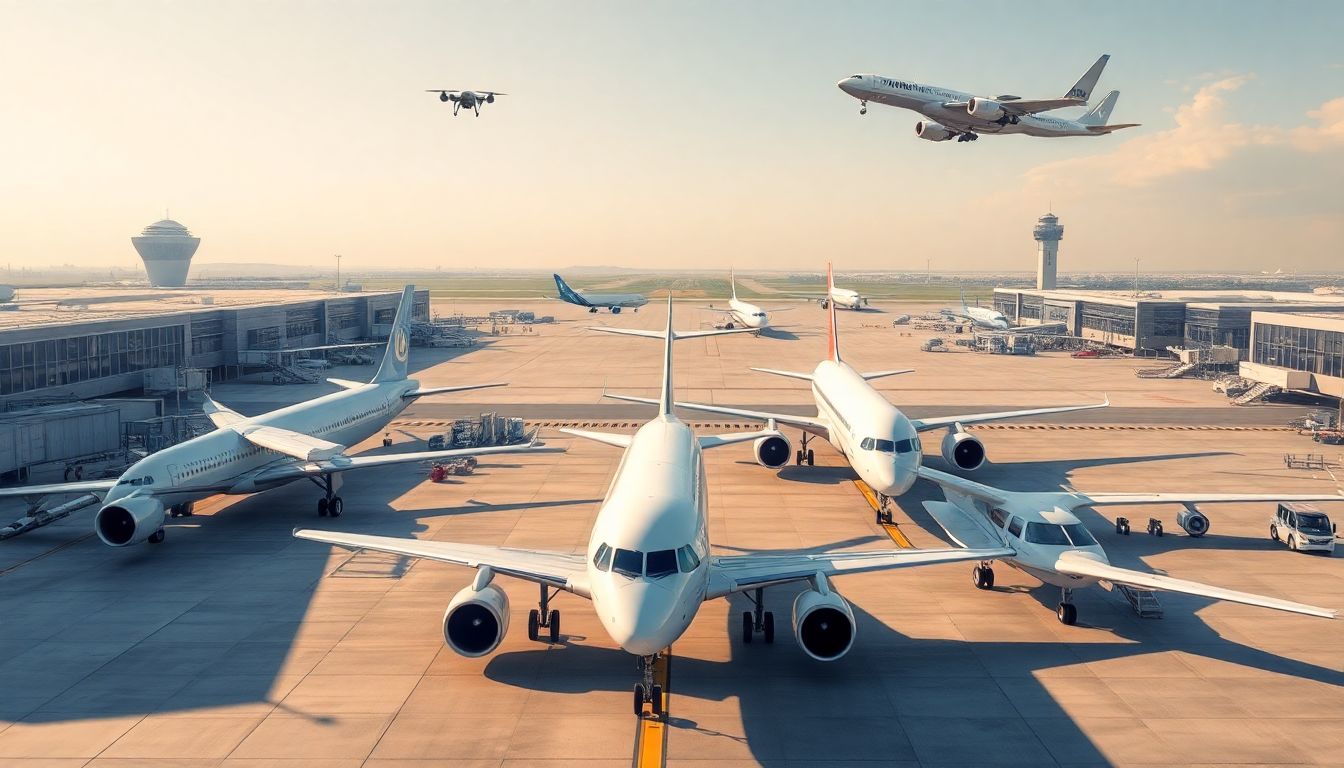Introduction
Boeing has been the leading commercial airplane manufacturer for decades. They’ve established an incredible reputation with legendary planes such as 737 and 787. But if we’re heading into 2025, there are new competitors emerging. The competitions are emerging due to advancing technology, laws changing, and new opportunities in the world. To investors, aircraft operators, and airplane enthusiasts, it does matter who is Boeing competing with. It defines where the company is heading and what is emerging. It is not merely size; it is smart technology, sustainability, and being attuned to a changing world.
Competitive Landscape Overview
The face of aeronautics keeps evolving. Held market share is being threatened today. Competition comes from innovation, which governments and evolving demands by travelers encourage. There are massive stakes because everybody is trying to win airline business of tomorrow and market share.
Top Competitors of Boeing in 2025
Airbus, Lockheed Martin, COMAC, and Embraer are all emerging competitors that will challenge Boeing’s dominance in 2025. These companies bring fresh technological advances, competitive pricing, and sustainability efforts that make them formidable rivals.
Airbus: The Main Rival
Market Environment and Fleet Overview
Airbus is Boeing’s competitor; it’s another giant. Together, they control a massive portion of the world’s airplane sales. Their A320 family, A350, and even their jumbo A380 are bestsellers. Airbus keeps getting order after order and expanding into new markets like Asia and Africa. Their airplanes are generally regarded as being more fuel efficient, newer, and more technologically sophisticated. Airbus has now caught up with Boeing, especially with the introduction of their new A321XLR and the development of their A350 family.
Technological Innovations and Differentiators
What makes Airbus unique? They’re trying to make flights lower in cost and environmental footprint. Their newer planes utilize composite materials to limit weight and fuel consumption. Aerodynamics are also optimized for efficiency and minimal drag. They’re leading the way in developing innovations to limit emissions, such as electric propulsion and urban air mobility. Airbus is gambling on sustainability.
Strategic Initiatives and Future Outlook
Airbus is going for it with concepts like electric planes and flying taxis. Their mission? To pioneer green flight and urban air mobility. They have created strategic partnerships across the world to reach out and go further. Airbus sees sustainable growth and wants to take flight first with harnessing zero-emission aircraft in the next decade.
Lockheed Martin’s Commercial Ambitions and Other Aero Giants
Lockheed Martin’s Changing Role in Commercial Aviation
Everyone who knows Lockheed knows it as a defense giant. It has only recently started to get into commercial aviation, however. It is attempting to shake up the market with alliances and acquisitions. Lockheed is leading the way in applying military technology to commercial airplanes, creating next-generation systems and materials that have the potential to change flight for aircraft.
Competitor Analysis
They do have some high technology such as advanced aerodynamics and smart materials. But they have no experience in mass commercial aircraft, with issues such as certification. Lockheed does partner with other corporations, trading technology that can possibly be utilized as an asset in the competitive marketplace in the years ahead.
Challenges and Opportunities
Getting other approvals is still a challenge. Airlines will not want to change names that they are used to. But if Lockheed can subtly introduce their new technology, they can disrupt the monopoly by Boeing. There is genuine potential if they keep innovating.
COMAC (Commercial Aircraft Corporation of China)
Key Aircraft and Market Penetration
COMAC’s Midlead aircraft, the C919 and ARJ21, will increase faster in China. They’re attempting to capture Boeing’s and Airbus’s market. The challenge? Dominate regional traffic and cross borders. They’re building markets in Asia, Africa, and Latin America.
Competitive Strengths and Challenges
COMAC is backed by the government and cheaper. They are cheaper to produce so it’s a more affordable buy for the airlines. They do have issues like getting necessary flight certificates from foreign countries. Quality control and ensuring safety standards consistently are concerns as well.
Strategic Impact on Boeing
If COMAC is successful, Boeing can expect a formidable competition in cost-conscious markets. With China’s growing middle class comes the need for more airplanes. The potential for alliance or even competition can reshape the global market. Boeing needs to keep its ears open to whatever China does.
Embraer: Regional and Niche Competition
Business Focus: Regional Aircraft and Business Jets
Embraer gained popularity in regional jets that fly passengers short distances at affordable costs. They are in demand among regional carriers for their E-Jet family. They have been pushing the limits of sustainable aviation and digital technology in recent years. Their aircraft are well-suited for small airports and short flights.
Market Strategy and Differentiators
With its scope-limited strategy for local markets, Embraer is still limited in scope but enormous in experience. It is focused on environmental sustainability and digital innovation to lead the growth. Its aircraft is utility-high, generally underrated compared to its larger competitors, with niche markets.
Competition with Boeing in Regional Markets
Embraer has recently secured large orders from private owners and Latin American airlines. It is aggressively expanding in Europe, Latin America, and Asia. Boeing must decide how it will respond in the wake of Embraer’s access to new technology and green technology emphasis. Shorts-length jets will become more prevalent, and airport congestion will ensue.
Conclusion
Boeing can anticipate a tough competitor by 2025 from Airbus, Lockheed Martin, COMAC, Embraer, and others. All the competitors must have newer technology, lower prices, and newer markets. Competition is what lowers prices and raises innovation, to the advantage of airlines and consumers. It is to be ahead for any aerospace player if they know about such competitors. Watch out for China’s COMAC or Lockheed rivals—that will rewrite the rule book. The sky is the limit, and the fight has started.
